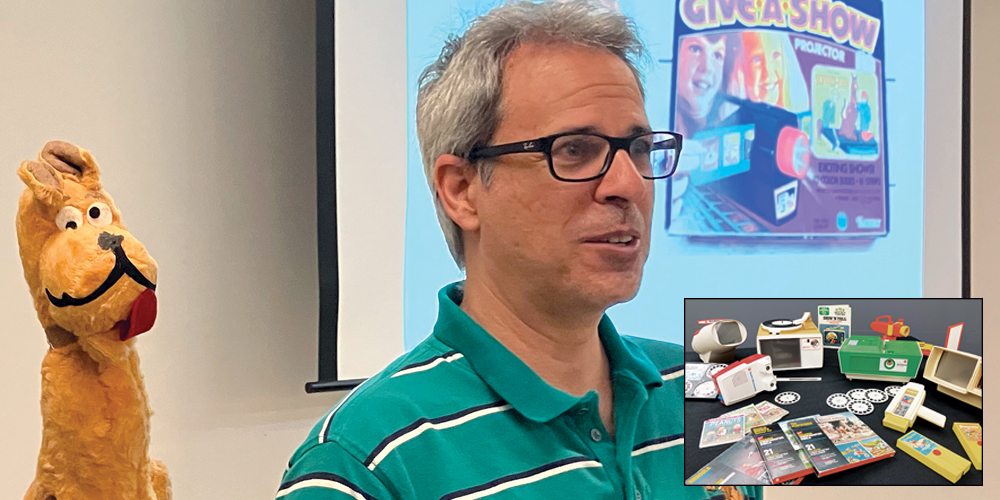At Home with Scooby-Doo, Where Are You!
with Dr. Kevin Sandler

Optical Toys in the 20th Century /
Animation as Art began with a display of facsimiles and models of 19th-century
optical toys that informed the public about the early history of animation and introduced them to contemporary artists' uses of these devices.
[ ... ]
Pre-cinematic apparatuses that create the illusion of motion through a series of drawings, required the participation of the spectator for whom it was patent that it was their activation of the devices that made the static images appear to move. They used the phenomenon known as persistence of vision to fool the eye into perceiving a series of still images as a continuous moving image. Therefore, they doubled as entertainment and scientific demonstration.
The abundance of commercial replicas of these apparatuses proves their popularity (which has arguably increased in the 21st century). Toymakers never ceased to market products based on these devices' principles, which have different connotations for each generation but never fail to elicit an intense experience in the public. The history of these toys and devices reflects the social, economic, and cultural developments of the periods when they were created. Digital natives can discover with them the magic behind the creation of movement.
 About the Lecturer: Dr. Kevin Sandler is an associate professor in the Film and Media Studies program at Arizona State University. He specializes in the contemporary US media business, with a particular focus on censorship and animation. He is the author of Hanna and Barbera: Conversations (University Press of Mississippi, 2024), The Naked Truth: Why Hollywood Doesn't Make X-Rated Movies (Rutgers University Press, 2007), the co-editor of Titanic: Anatomy of a Blockbuster (Rutgers, 1999), and editor of Reading the Rabbit: Explorations in Warner Bros. Animation (Rutgers, 1998). He also has published in several anthologies, journals, and public-facing outlets including Cinema Journal, Animation Journal, and Slate. His upcoming books are Scooby-Doo, and Where Are You! (Duke University Press) and The Hanna-Barbera Anthology (University of Texas Press).
About the Lecturer: Dr. Kevin Sandler is an associate professor in the Film and Media Studies program at Arizona State University. He specializes in the contemporary US media business, with a particular focus on censorship and animation. He is the author of Hanna and Barbera: Conversations (University Press of Mississippi, 2024), The Naked Truth: Why Hollywood Doesn't Make X-Rated Movies (Rutgers University Press, 2007), the co-editor of Titanic: Anatomy of a Blockbuster (Rutgers, 1999), and editor of Reading the Rabbit: Explorations in Warner Bros. Animation (Rutgers, 1998). He also has published in several anthologies, journals, and public-facing outlets including Cinema Journal, Animation Journal, and Slate. His upcoming books are Scooby-Doo, and Where Are You! (Duke University Press) and The Hanna-Barbera Anthology (University of Texas Press).
This program was supported by the Ryla T. ∧ John F. Lott Endowment for Excellence in the Visual Arts, administered through the TTU School of Art, and the Art History Area, School of Art, TTU.
